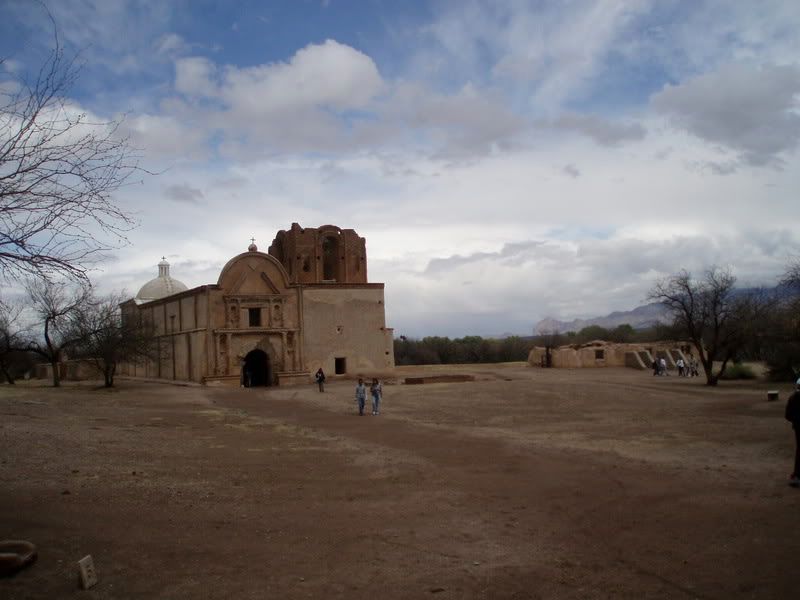
Earlier, I don't remember the exact date, we visited the San Xavier Mission. We just recently visited the Tumacacori (too-maw-caw-co-ree) Mission. They were very different but I thought Tumacacori was more interesting.
San Xavier was maintained and is still used as a church. The art and religious icons there were a bit overwhelming; everywhere you look, every inch is covered in carvings and paintings. There was no tour and not as much information as I would have liked, just one room stuffed with art.
 At Tumacacori, you could explore the entire grounds of the Mission. It was not maintained very much, so is now just kind of a ruin. We took a guided tour through a lot of the church and the grounds. Shortly after Tumacacori was complete, there was the Mexican Revolution and anyone from Spain had to leave Mexico, including the priest. The Mission never got another priest. The mission was used for another 20 years afterwards (except, of course, the church), but lack of support from the government, Apache raids and the hard winter of 1848 drove the last residents away and thus the mission was abandon.
At Tumacacori, you could explore the entire grounds of the Mission. It was not maintained very much, so is now just kind of a ruin. We took a guided tour through a lot of the church and the grounds. Shortly after Tumacacori was complete, there was the Mexican Revolution and anyone from Spain had to leave Mexico, including the priest. The Mission never got another priest. The mission was used for another 20 years afterwards (except, of course, the church), but lack of support from the government, Apache raids and the hard winter of 1848 drove the last residents away and thus the mission was abandon.-Ukiah
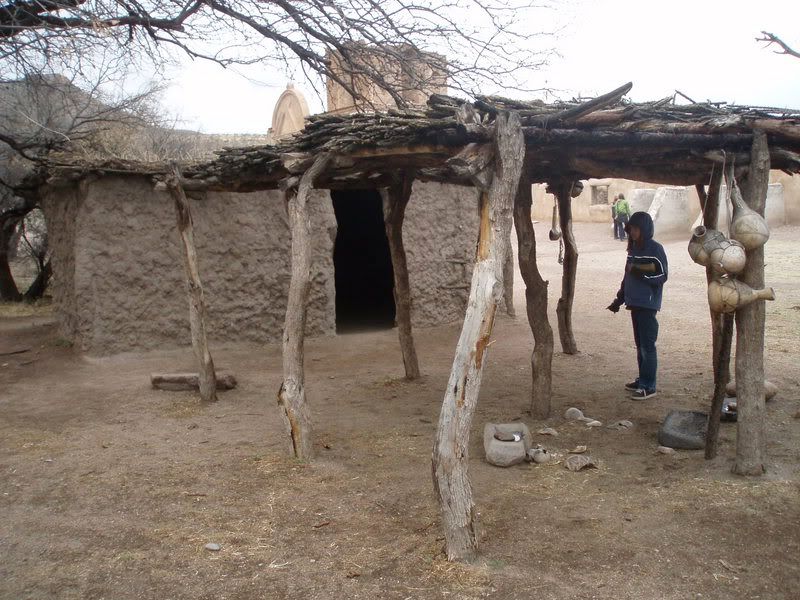 I really like Tumacacori. The Mission is old and beautiful. It's full of stories and memories- so full of life. There's so much you can't see even though it is right in front of you. There are rangers there because it is a park now. Ukiah and I got to be Junior Rangers (for a 2nd time- because we did that in Oregon too).
I really like Tumacacori. The Mission is old and beautiful. It's full of stories and memories- so full of life. There's so much you can't see even though it is right in front of you. There are rangers there because it is a park now. Ukiah and I got to be Junior Rangers (for a 2nd time- because we did that in Oregon too).The people who lived here, the O'odham, lived in mud houses. They had tools and games that are so different from ours, but also the same. They cooked outside mostly and the got water from the Santa Cruz river. The women used willow and devil's claw plants to make baskets.
If you ever come to Arizona, you should visit the Mission
-Aslin
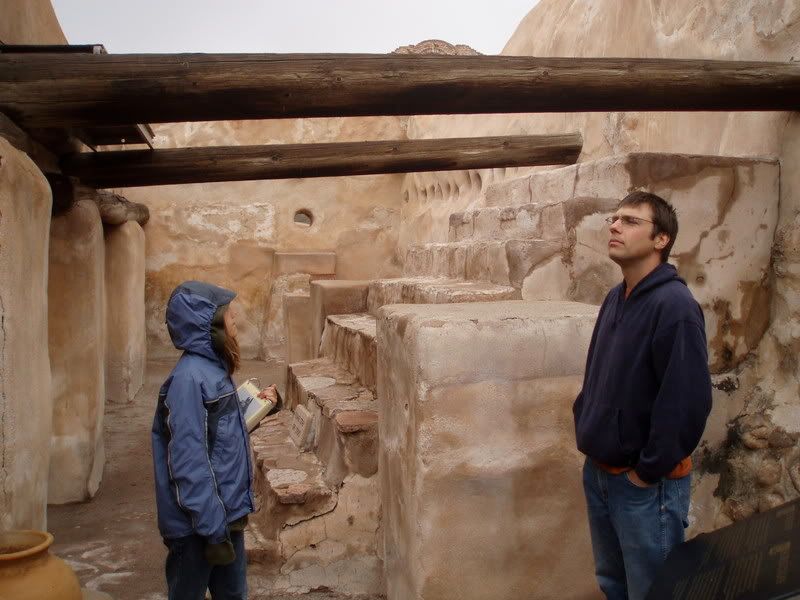
Graffati at Tumacacori dates back to 1849 and it's now protected by the federal government. Like San Xavier, this Mission marked the expansion of New Spain and the influence of Father Kino who first visited the area in 1691. Following a Pima (O'odham) uprising in 1751, the mission was relocated in 1753, to the west side of the Santa Cruz river, closer to the protection of soldiers at the presidio in Tubac.
A footprint of the modest 1757 original church lies just beyond the modern remains of Tumacacori. It served for 65 years, first under Jesuit missionaries, then Franciscans. Construction of the new church began in 1800. Lack of funds, disease, raids, and a host of other setbacks, including complicated design (the adobe bricks of the bell tower weigh 63 pounds each, with walls 9-feet thick at the base)- slowed the construction process. The church was dedicated in 1821, tower still incomplete, and served just 7 short years before the Spanish-born priests were expelled.
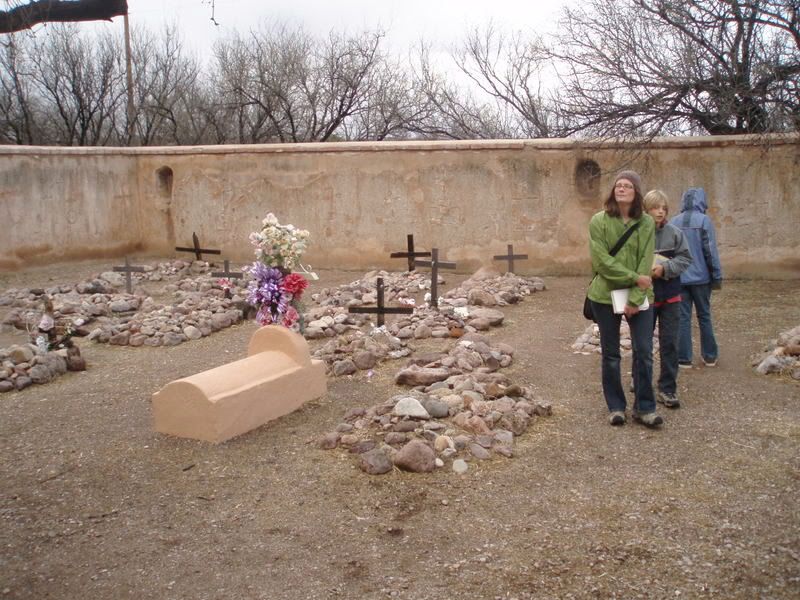 Mexican priests and a small group of O'odham Catholics continued to live and work at the Mission, raising livestock, growing native crops along with Spanish figs, pomegranates and peachs- for 20 years. In 1848, many icons and artifacts were transferred from Tumacacori to San Xavier and the Mission was abandon, bell tower scaffolding still in place.
Mexican priests and a small group of O'odham Catholics continued to live and work at the Mission, raising livestock, growing native crops along with Spanish figs, pomegranates and peachs- for 20 years. In 1848, many icons and artifacts were transferred from Tumacacori to San Xavier and the Mission was abandon, bell tower scaffolding still in place. Until 1908 when the Mission became a National Monument, soldiers, cowboys, treasurer hunters and natives cycled through Tumacacori, building cook-fires in the sanctuary and carving their names above the holy water fountain. The chior loft is gone, the baptismal room crumbling. Hints of color offer some evidence of the 12 frames where the apostles once hung. The parks department and the O'odham natives now work jointly, not to restore the Mission, but to "keep it standing" after 250 years of weather, use and graffiti. -Nora
Until 1908 when the Mission became a National Monument, soldiers, cowboys, treasurer hunters and natives cycled through Tumacacori, building cook-fires in the sanctuary and carving their names above the holy water fountain. The chior loft is gone, the baptismal room crumbling. Hints of color offer some evidence of the 12 frames where the apostles once hung. The parks department and the O'odham natives now work jointly, not to restore the Mission, but to "keep it standing" after 250 years of weather, use and graffiti. -Nora
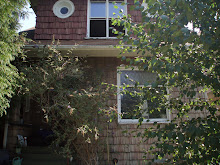



No comments:
Post a Comment